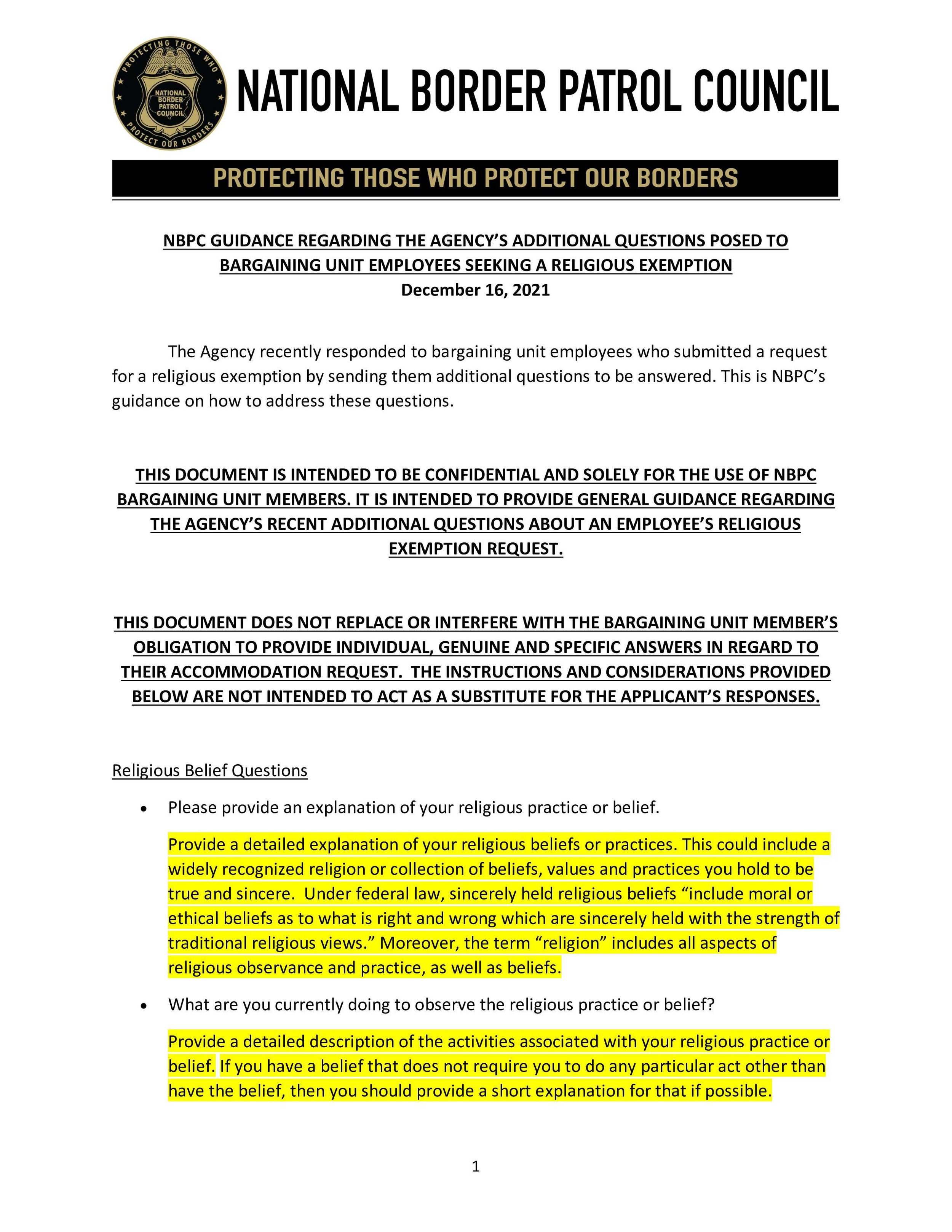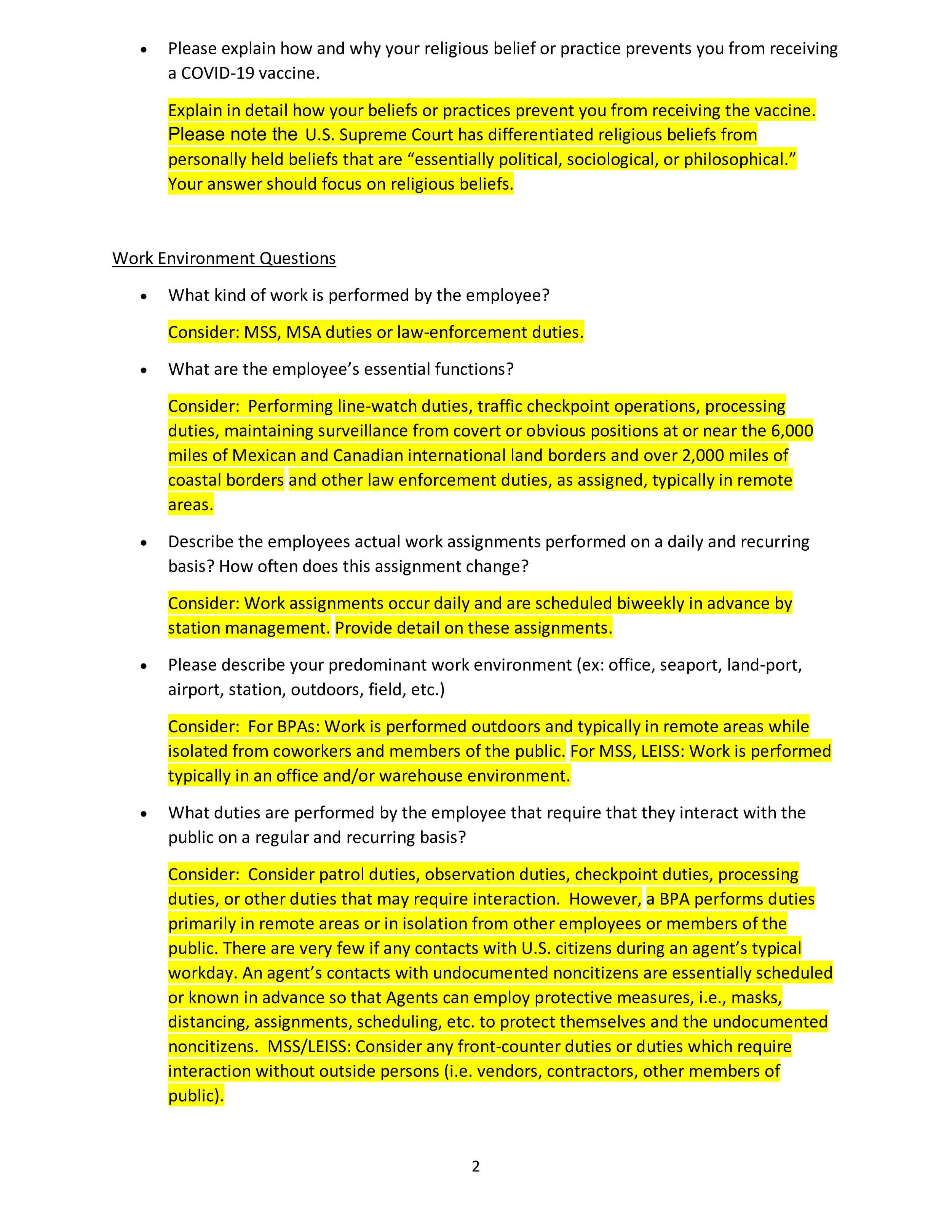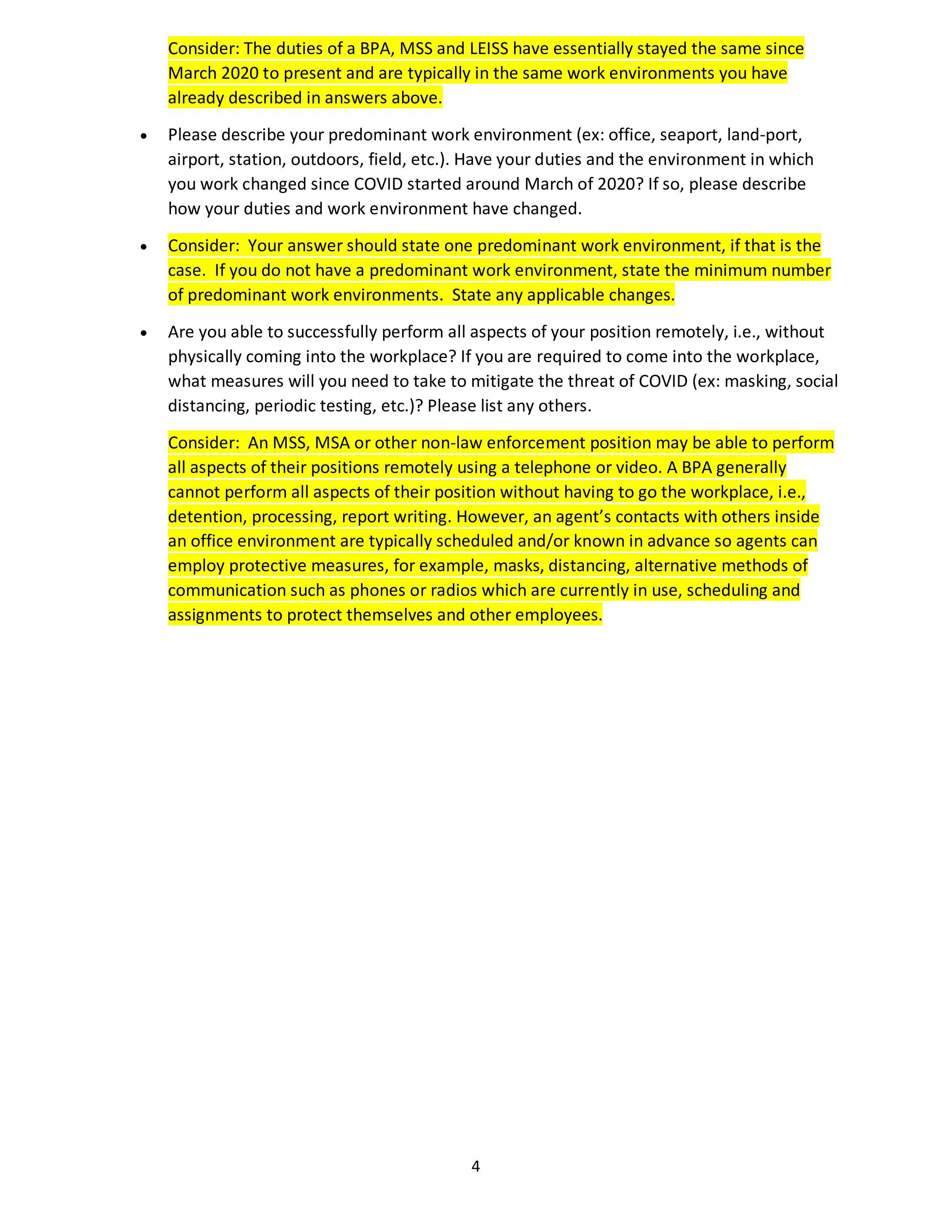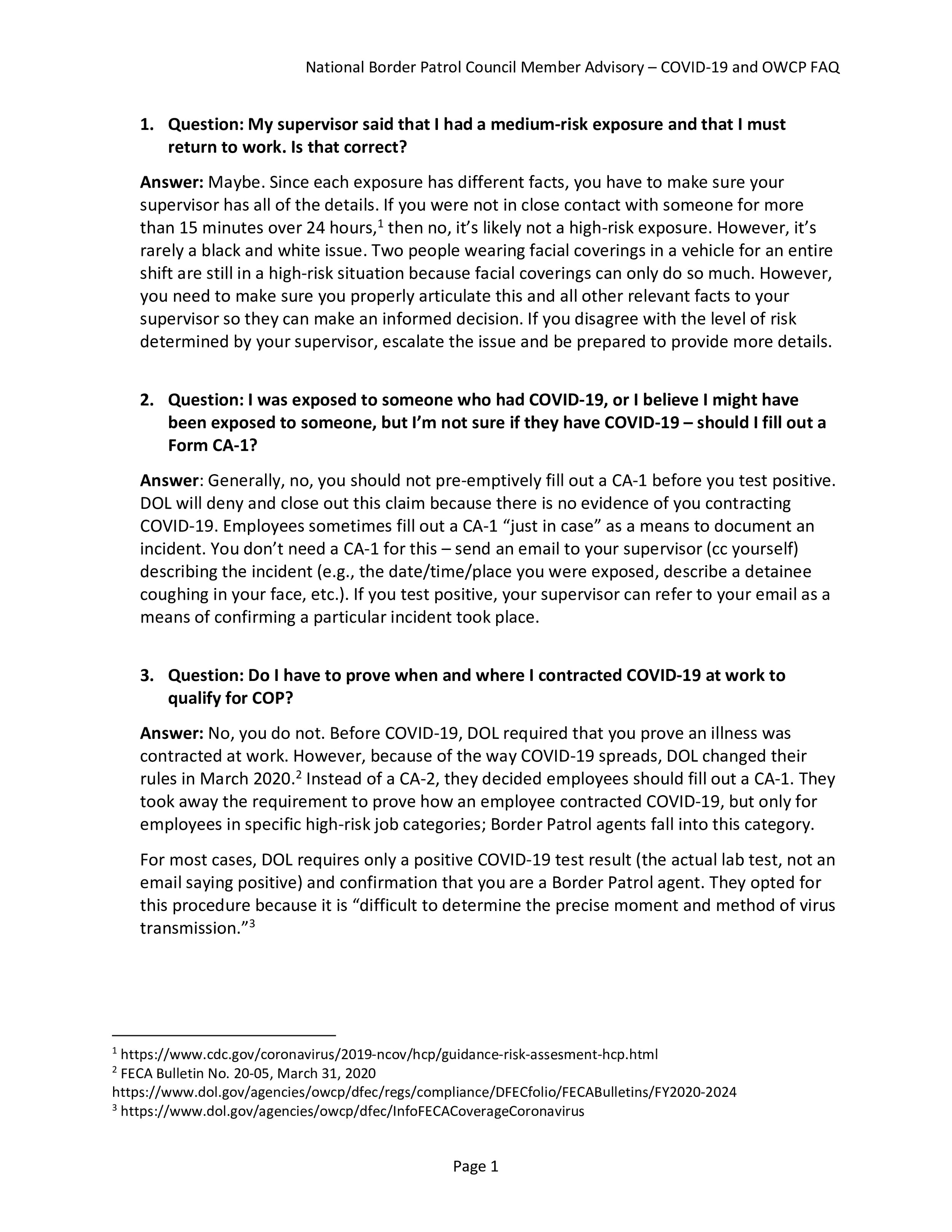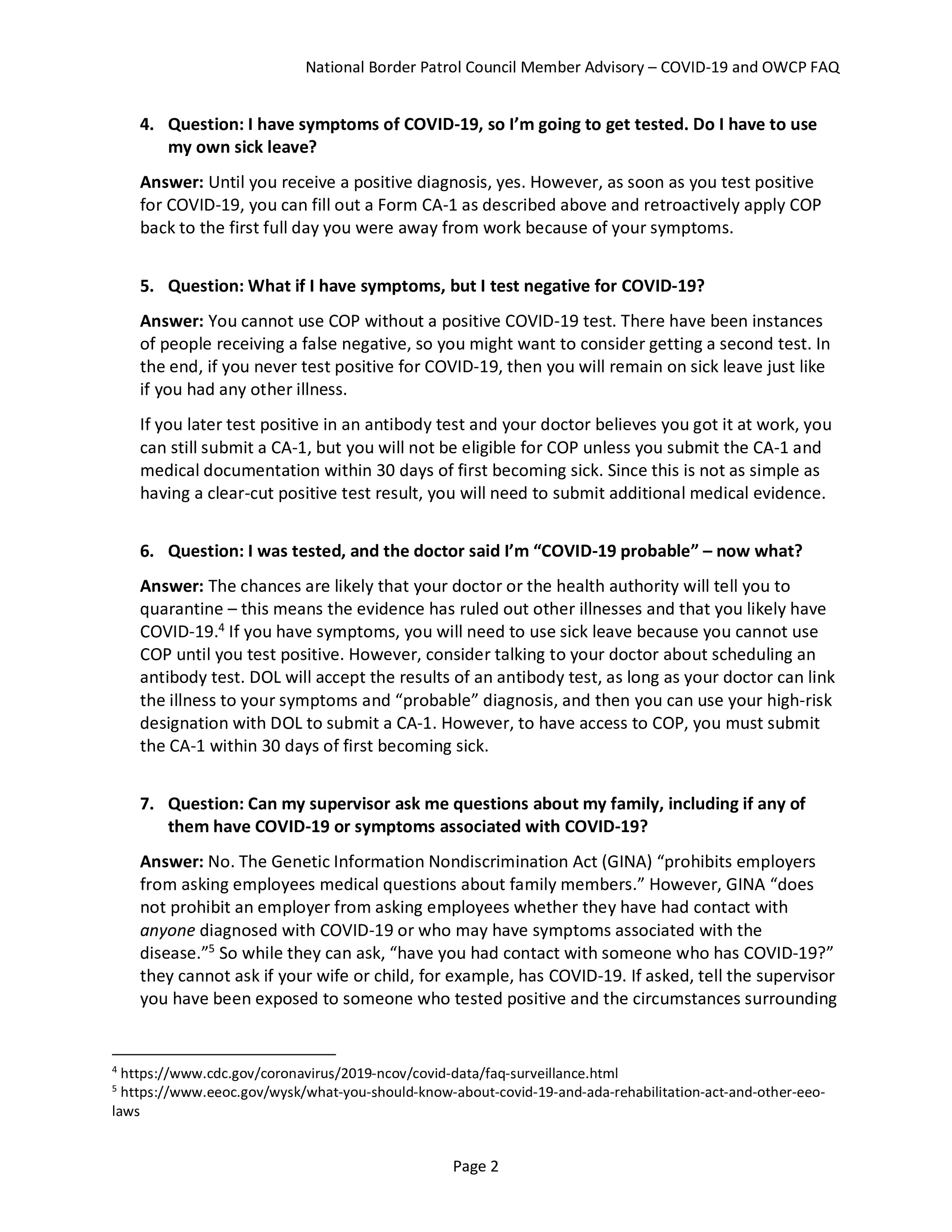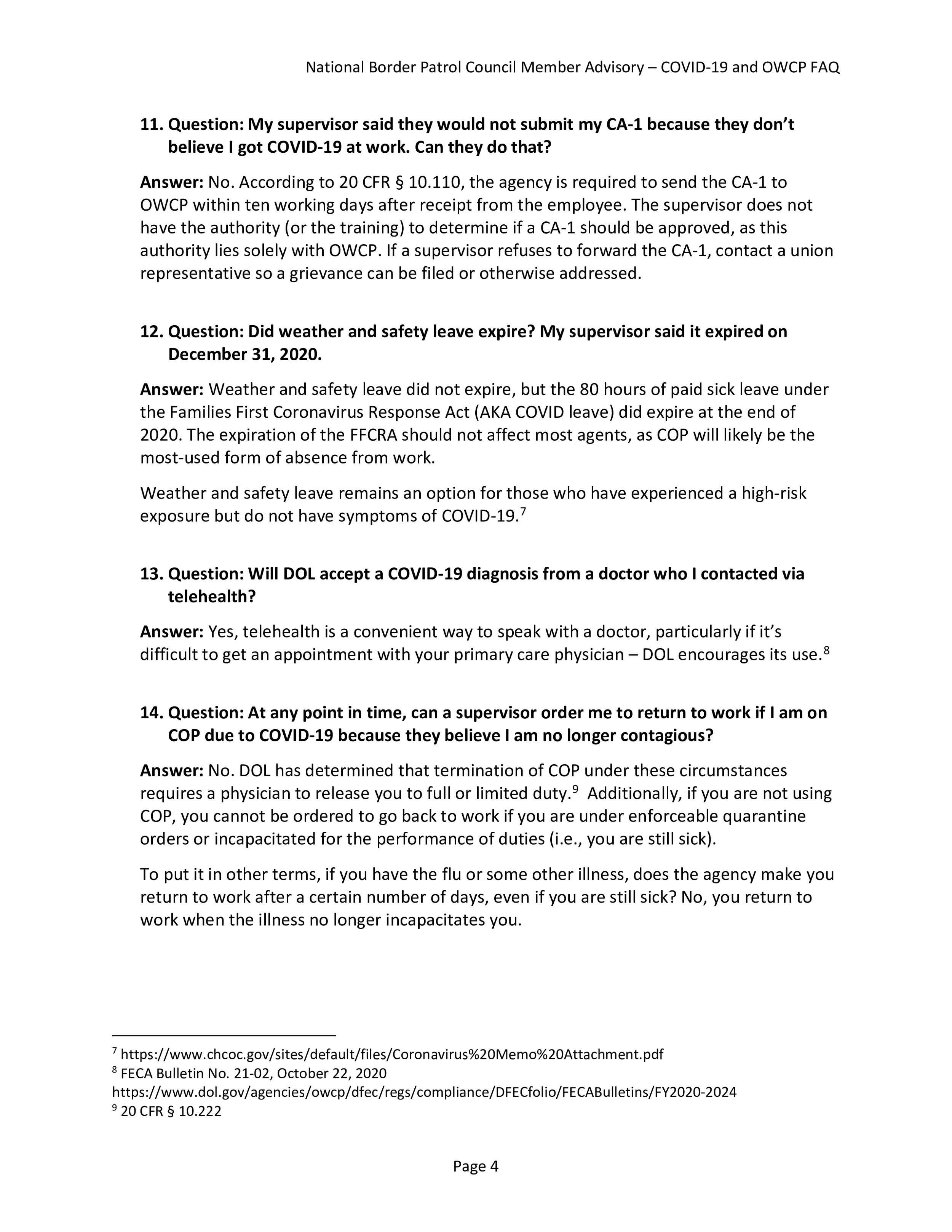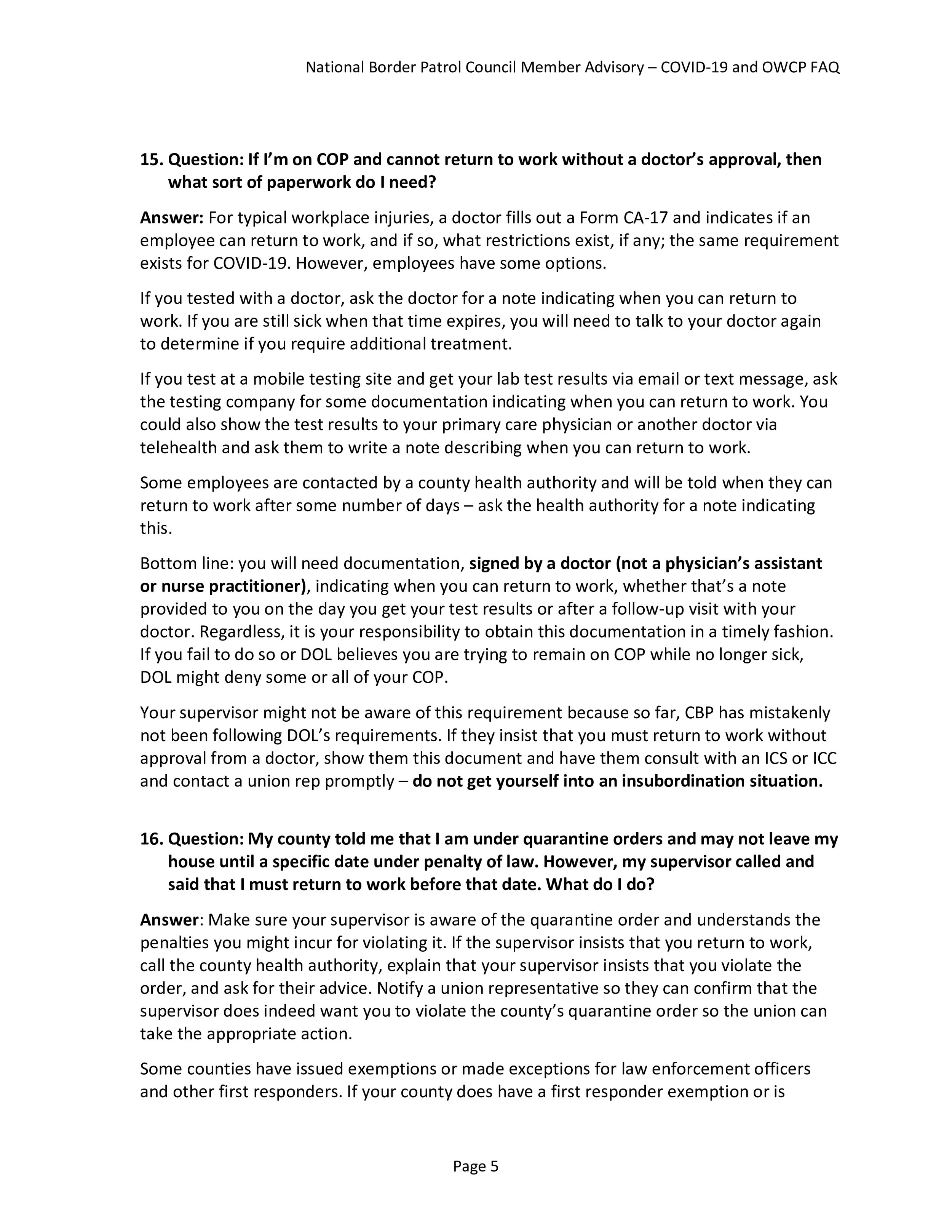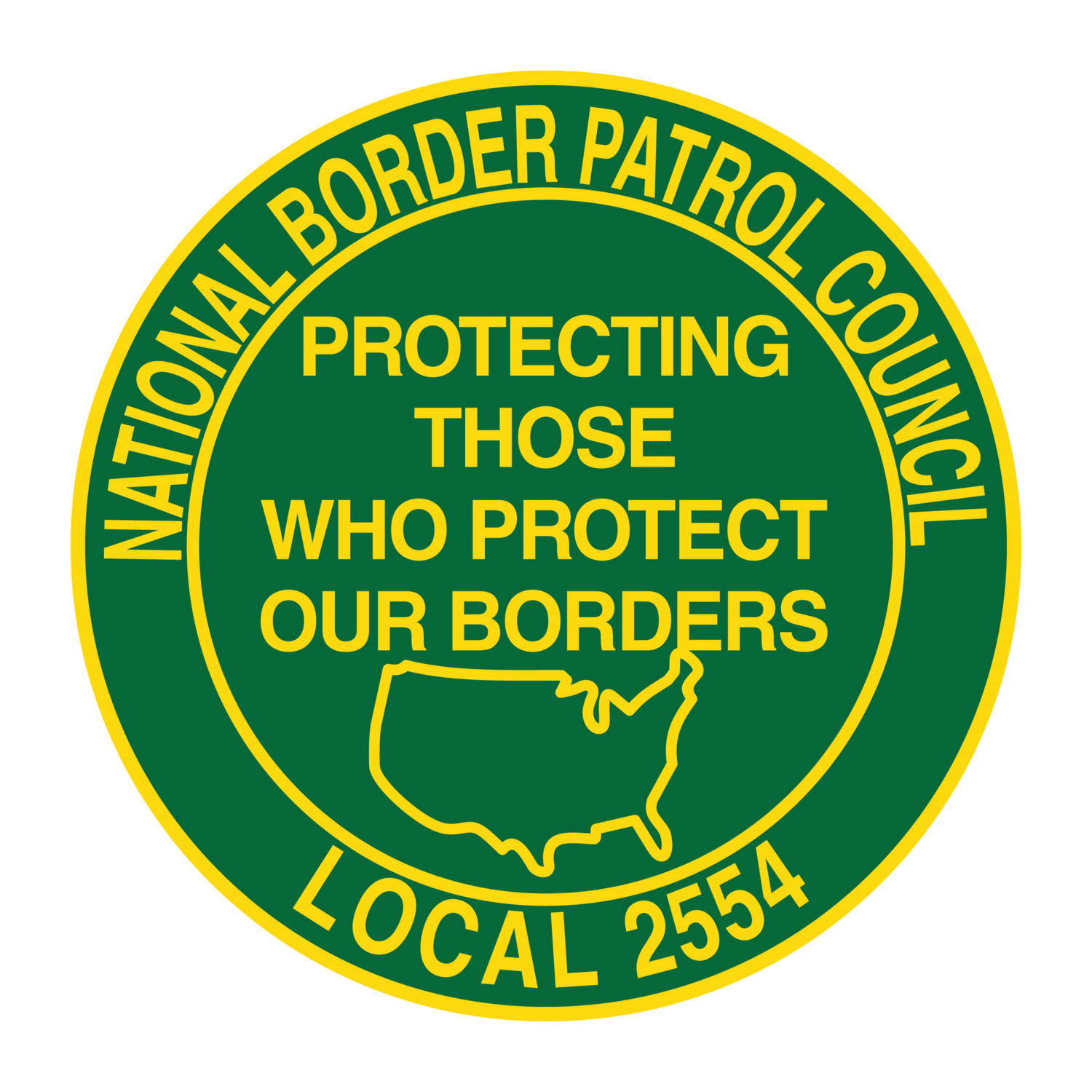JANUARY, 2023
NEW DEPARTMENT OF LABOR GUIDANCE CONCERNING COVID-19
The Department of Labor, Office of Workers' Compensation (OWCP), published a bulletin last month regarding changes to how COVID claims will be processed.
You might remember that early in the pandemic, DOL changed the rules to allow COVID claims to be filed on a Form CA-1 and determined that people in high-risk jobs would be assumed to have caught COVID while on duty. Then Congress passed the American Rescue Plan Act (ARPA) in March 2021, which turned that DOL rule into law. The law stated that anyone who contracted COVID from January 27, 2020, through January 27, 2023, would be assumed to have caught it on duty.
Unfortunately, those days are quickly coming to a close – when this special case handling expires on January 27, 2023, COVID will be treated like any other infectious disease.
Anyone who is diagnosed with COVID after January 27, 2023, has two options:
Fill out a Form CA-1, but "only if the event alleged to have caused the diagnosed COVID-19 is identifiable as to time and place of occurrence. This must be a specific event or incident or series of events or incidents during a single day or work shift. See 20 CFR §10.5(ee)."
Fill out a Form CA-2, which requires an employee first to see a doctor at their own expense, and then have the doctor write a doctor's note explaining why they believe the employee’s COVID diagnosis is due to an on-duty exposure. The employee would then submit the Form CA-2 with that medical evidence.
So what does this mean for the average employee? After January 27, 2023, if an employee tests positive and can unequivocally show that they were exposed to someone at work who tested positive for COVID, they can fill out a Form CA-1. They would need to be able to explain, for example, that they transported an illegal alien for 30 minutes in a vehicle with the windows rolled up on a particular date or they were in an enclosed interview room with a subject who later tested positive. These are just examples, but this is the sort of detailed information they are looking for, along with the other requirements of 20 CFR § 10.115.
They could then use continuation of pay (COP), but it would be up to OWCP to decide if the claim will be accepted. If it’s ultimately not accepted, the employee must convert any COP used to annual leave, sick leave, or leave without pay. Remember, you do not have to wait for DOL to accept a claim to use COP, but if they deny the claim, the COP goes away and has to be replaced with another form of leave.
However, if an employee intends to fill out a Form CA-2, they would have to use sick leave and would not have access to COP.
So this means that if someone tests positive and wants to file a CA-1, it will be on them to try to figure out if they were around someone who tested positive. Most stations are only testing detainees for COVID if they exhibit symptoms, so everyone will have to be more aware of when detainees test positive so CA-1s can be filled out when appropriate. The same goes for employees – if someone tests positive, we can't trust that the station will do proper contact tracing, so they need to make sure they notify anyone they were around before testing positive.
You can read OWCP’s FECA Bulletin No. 23-02 at this link for more details:
https://www.dol.gov/agencies/owcp/FECA/regs/compliance/DFECfolio/FECABulletins/FY2020-2024#FECAB2302
AUGUST, 2022
COVID TESTING WILL NO LONGER BE MANDIDATED FOR UNVACCINATED EMPLOYEES
The White House told agencies to end their COVID-19 screening testing programs for unvaccinated employees by Monday, August 22, 2022.
The new guidance (see attached) allows for some facilities in some settings to still require testing, but it’s unclear what that will look like. CBP just received the new directive, and they are waiting for guidance from DHS, as always.
The new requirement tells agencies to stop screening testing wherever they are differentiating between vaccinated and non-vaccinated employees. So that means stations will have to stop only testing non-vaccinated employees, but if there is some location out there that tests everyone, then they can continue screening testing. However, I don't know of any place like this.
We expect to hear more from CBP by the end of the week and will keep you posted. If someone asks if they have to be tested tomorrow, yes, they are still required to participate until the official word comes out, which should be no later than Monday, August 22.
Below are a couple of articles about the change:
JULY, 2022
COVID TESTING IN EL CENTRO SECTOR
Recently some additional border counties have had their COVID-19 community level rates increase to medium or high, which triggers mandatory testing for all non-vaccinated federal employees.
Bargaining is ongoing, but the bottom line is that federal regulations allow for this sort of testing to take place. A demand to bargain was filed at the end of February, and we are sorting out some of the particulars. However, it will ultimately result in all non-vaccinated employees still having to be tested when the spread is at the medium or high level.
Every Thursday, the CDC updates the community levels on their website, found here:
If you see a county in your sector that is yellow or orange (i.e., medium or high), then testing will take place in the following week (Sunday through Saturday). If by the following Thursday the spread has dropped back to yellow (i.e., low), then there will be no testing during the week after that Thursday.
Some employees expressed concerns over the testing, but this is what the vast majority of people who submitted a reasonable accommodation request said they would do to avoid the vaccine -- some even said they would go through daily testing.
We will be able to show that agency operations worked out just fine with testing, thereby negating any concerns the agency had with approving everyone's reasonable accommodation requests. Although the agency has said they are not going to implement the mandate until further notice, that issue still remains unresolved in the courts.
NBPC Hazardous Duty Lawsuit Update
On March 3, 2022, the NBPC filed its lawsuit regarding our members’ claims to be paid hazardous duty pay. The NBPC lawsuit currently has over 8k plaintiffs. You can only become a member of our lawsuit by signing a retainer form with the law firm.
We have received questions from members regarding a separate AFGE lawsuit and whether members should join both. You cannot be a part of two lawsuits over the same issue, therefore if you are already a member of the NBPC lawsuit, and you joined the AFGE lawsuit, you need to contact AFGE’s law firm and ask that you be removed from their lawsuit.
Only those who were NBPC members as of March 3, 2022, can be plaintiffs in our lawsuit. Our lawsuit is uniquely focused on the distinctly difficult aspects of our jobs that we believe make us eligible for hazardous duty pay. The AFGE lawsuit involves different types of employee classifications, including those who have not interacted with the public.
Non-Border Patrol agents consent/retainer form
Border Patrol agents consent/retainer form
Once you have signed up, the lawyers will send you a letter confirming your participation.
If you have questions, contact the lawyers at info@mselaborlaw.com.
COVID-19 HAZARDOUS DUTY PAY LAWSUIT
Click this link to go to the National Border Patrol Council’s lawsuit over COVID-19 Hazardous Duty Pay:
Hazardous Duty Pay Lawsuit (UPDATE) | National Border Patrol Council (bpunion.org)
